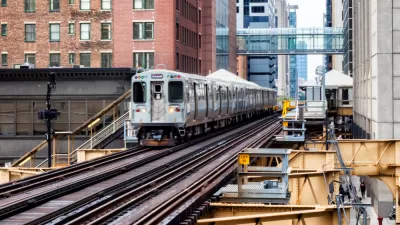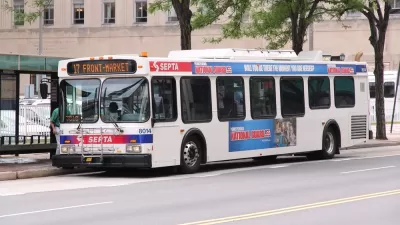As transit ridership remains tepid around the country, transit agencies are looking to diversify their funding sources and become less reliant on farebox revenue.

While transit agencies are bending over backwards to bring back passengers, they may have to accept that the post-pandemic future could mean fewer daily riders, writes Skylar Woodhouse in Bloomberg. Despite numerous efforts to reduce or eliminate fares, ridership continues to lag in most cities.
Jim Aloisi, a professor in transportation policy and planning at Massachusetts Institute of Technology, says “The problem is structural and it has to do with how agencies have relied too heavily on fare revenue.” According to Woodhouse, “Unless the government steps in or new sources of revenue are found, many agencies may be left with two choices. They can either cut service or raise fares, neither of which will help to bring riders back.” Bob Powers, head of Bay Area Rapid Transit, is calling for his agency to “to be funded more like an essential service, with less reliance on fare revenue.”
As Woodhouse notes, “The outlook appears grim but not all transit authorities are prepared to accept current ridership levels as permanent, especially with rising gas prices and increasing focus on sustainable transportation modes.”
“Nationwide, a key part in boosting ridership will be to increase service and eliminate delays,” but doing so will require new sources of funding and a model less heavily reliant on ridership revenue.
FULL STORY: Without Commuters, US Transit Agencies Are Running Out of Options

Alabama: Trump Terminates Settlements for Black Communities Harmed By Raw Sewage
Trump deemed the landmark civil rights agreement “illegal DEI and environmental justice policy.”

Planetizen Federal Action Tracker
A weekly monitor of how Trump’s orders and actions are impacting planners and planning in America.

Why Should We Subsidize Public Transportation?
Many public transit agencies face financial stress due to rising costs, declining fare revenue, and declining subsidies. Transit advocates must provide a strong business case for increasing public transit funding.

Understanding Road Diets
An explainer from Momentum highlights the advantages of reducing vehicle lanes in favor of more bike, transit, and pedestrian infrastructure.

New California Law Regulates Warehouse Pollution
A new law tightens building and emissions regulations for large distribution warehouses to mitigate air pollution and traffic in surrounding communities.

Phoenix Announces Opening Date for Light Rail Extension
The South Central extension will connect South Phoenix to downtown and other major hubs starting on June 7.
Urban Design for Planners 1: Software Tools
This six-course series explores essential urban design concepts using open source software and equips planners with the tools they need to participate fully in the urban design process.
Planning for Universal Design
Learn the tools for implementing Universal Design in planning regulations.
Caltrans
Smith Gee Studio
Institute for Housing and Urban Development Studies (IHS)
City of Grandview
Harvard GSD Executive Education
Toledo-Lucas County Plan Commissions
Salt Lake City
NYU Wagner Graduate School of Public Service





























